Why Your Child Should Try Copywork for Writing Practice

If you’re thinking about copywork, it’s as straightforward as it sounds. Copywork means that a person copies someone else’s words, sentences, or paragraphs for writing practice. Your child might already be enjoying copywork without even knowing it. If you haven’t tried it yet, copywork might become your child’s favorite way to practice handwriting.
Since we’re raising trilingual children, copywork has been tremendously helpful for writing practice in English, Chinese, and Korean. I will rave about the many benefits and share examples of copywork in each language.
This article was originally published on November 29, 2019, and has since been updated with new information.
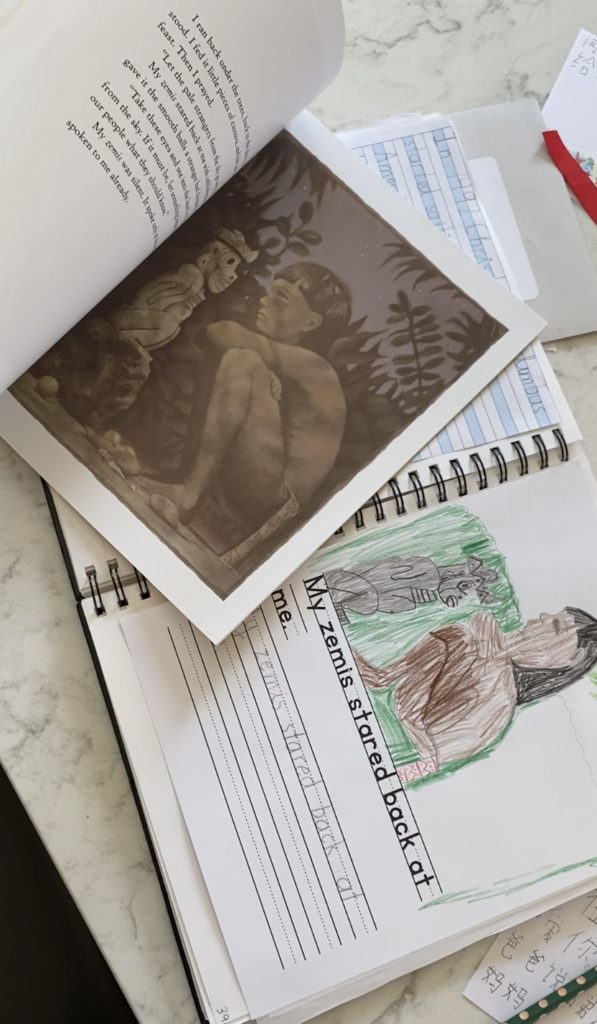
What is copywork?
Copywork has been in practice since ancient times! Centuries before printers were invented, people would copy the Holy Bible and other works by hand to preserve and share information with other people.
In modern times, copywork is a popular writing strategy in schools. It’s also common in homeschooling families that follow various pedagogies such as Charlotte Mason, Montessori, and classical education. However, copywork often comes intuitively to children while exploring handwriting and drawing at home.
If you’re raising bilingual children, copywork can also help with teaching kids a second language.
Why is copywork important?
Copywork is important because handwriting is important. As the world becomes increasingly digitized, research shows that handwriting on paper is more effective for learning than typing on a keyboard.
Because the physical act of writing is relatively slow and tedious, the brain must take time to process and synthesize information. Also, handwriting involves multiple senses, which helps encode information into long-term memory.
Benefits of copywork for writing practice

Writing is much more complicated than putting pencil to paper.
It involves generating ideas, spelling, fine motor skills, eye-hand coordination, memorization, organization, and patience – just to name some of the countless skills.
Plus, English spelling is full of irregularities. Chinese characters have stroke order rules, which can overwhelm students learning to express themselves. In addition, the Korean alphabet can be confusing due to several letters that resemble each other.
In comes copywork to the rescue! Here are the many benefits of copywork for children learning how to write:
- Children can focus on penmanship, the physical task of writing, without worrying about creativity and originality.
- Rather than copying boring workbooks, children can enjoy autonomy in choosing what to copy.
- Copying favorite works is an effective way to encourage your child to read!
- By carefully copying while reading, children will notice spelling, sentence structure, punctuation patterns, and new vocabulary.
- A child-led writing strategy can significantly boost motivation, confidence, and stamina!
Recommended: Natural Ways to Teach Kids Grammar
When can kids start copywork?

Believe it or not, when a child first copies a line or circle, they practice copywork skills.
When a child becomes familiar with letters, they are often excited about copying their name and other names.
As for other languages, children can start by copying simple Chinese characters, while those learning Korean might delight in the clean lines of Hangul letters.
As for formal copywork lessons and homework assignments, most children are ready around 1st grade when they have learned to read and write letters.
All you need are three things: a pencil, a sheet of paper or notebook, and something to copy.
Recommended: Fun Printable Hundred Chart Activities
What works to copy for homeschooling
As children mature, they can start to copy 1 to 2 sentences and eventually paragraphs from books, songs, and poetry. Favorite quotes and verses from scripture are also common copywork sources for homeschooling families.
But if you follow your child, copywork can really involve anything. My son has spent countless hours copying words from his Pokémon cards!
Here’s an example of first-grade copywork homework: copy one English sentence from a chapter book. The top half of the page is for children to illustrate their reading comprehension skills.

What a difference a few months can make! This is an example of copywork later in the school year.
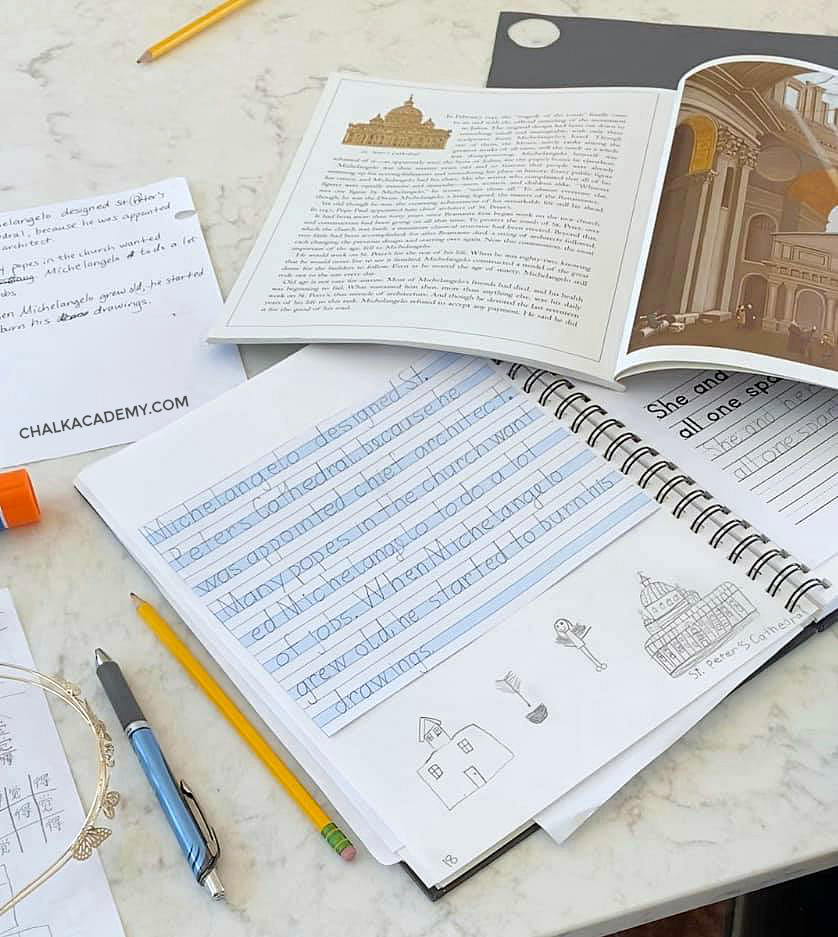
Compared to English, Chinese writing is a lot more complicated. Here’s an example of copywork in Chinese with a writing worksheet to guide the formation of Chinese characters. The worksheet is for the Chinese song 世上只有妈妈好 here.
During this phase of writing, we occasionally worked on Chinese stroke order. However, we weren’t dogmatic about following every stroke every single time; I could tell it would kill her motivation to explore writing. As parents, we have to choose our battles wisely!

Because we live in an English-speaking community, my daughter does not need to learn Chinese. Therefore, our children deserve to have a Chinese learning experience that is internally motivating. Chinese songs are a fun way to learn how to speak, read, and write new words.
Here’s an example of Chinese copywork on a blank sheet of paper. Although we have blank Chinese writing worksheet grids, my child didn’t want to be confined by boxes on this particular day.
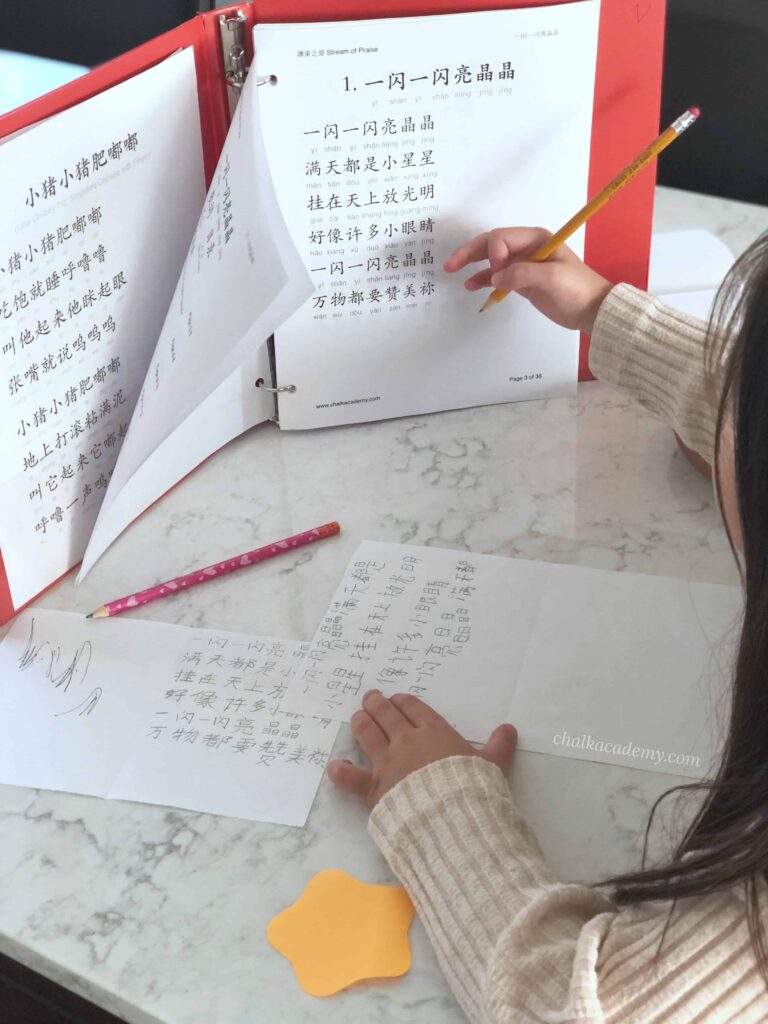
Last but not least, here’s an example of copywork in Korean mixed with spontaneous English and Chinese handwriting.
It’s fascinating – and very normal – to see language skills at different levels in a multilingual child.
Recommended: 35 Fun Activities That Boost Chinese Language Skills
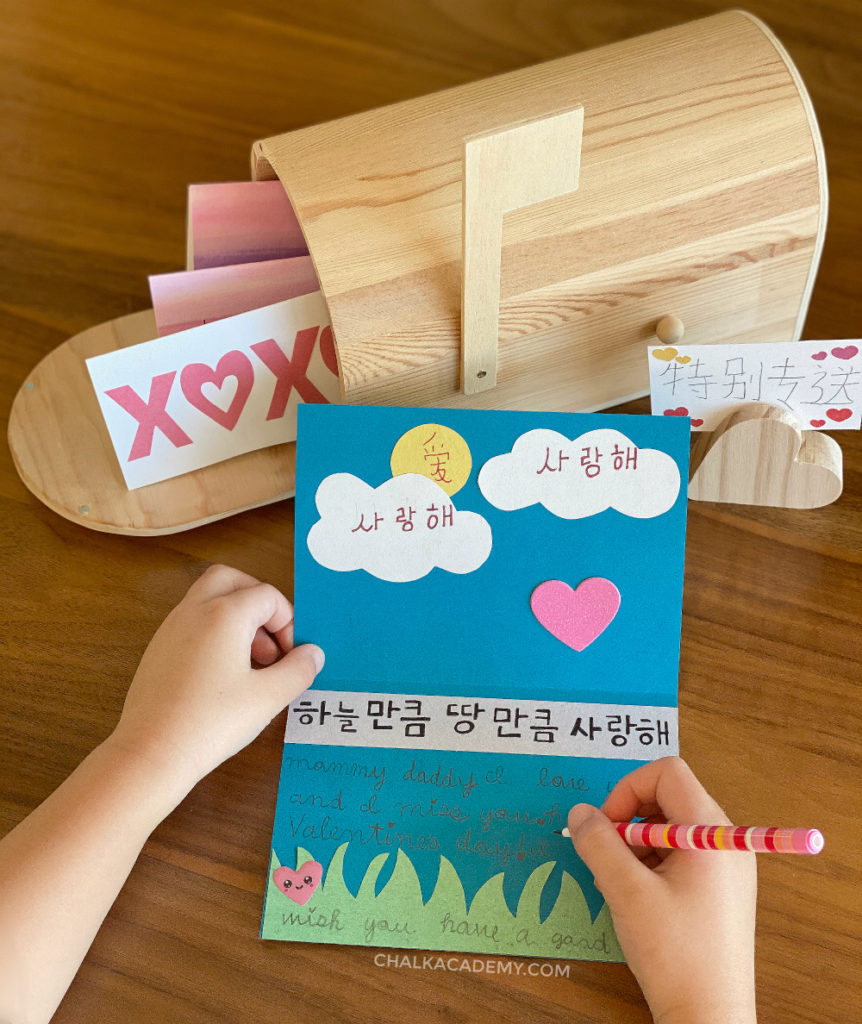
When will children be ready to write on their own?
Every child’s learning pace and fine motor skills are different. Some children may write only a few words or a short sentence for many months to a year before increasing to multiple sentences and paragraphs.
Others progress more rapidly. But remember – learning to write is not a race!
Sometimes, a child may get a spurt of motivation and want to copy pages of new words. Other times, a child can go for days or weeks without feeling inspired to copy or write anything. During these lulls, they may explore other life skills, such as mastering the monkey bars or trying a new instrument.
You’ve probably noticed that your child’s development and interest might come in waves. This is normal, and I’ve seen it with my children, too! 🙂

Benefits of copywork for adults
Believe it or not, copywork is not just for kids! Writing is a lifelong learning journey, and copywork can be a wonderful habit for adults.
As part of my daily routine, I enjoy copying a favorite quote or paragraph from a book into my journal. Sometimes, I copy reflections from my Chalk Academy website into my diary.
Even seasoned writers can benefit from copywork. When faced with writer’s block, copywork can give inspiration for future writing.
Copywork can also help you learn new writing styles. Just make sure to avoid plagiarism!
Read next: How A Dictation Journal Improves Speaking, Reading, and Writing
Have you tried copywork for writing practice?
I’d love to hear your thoughts about teaching reading and writing at home and how it’s been going for your family. Please share with the community in the comments below.
Bilingual writing tips and tools for kids
In addition to copywork, here are other effective ways to support your child’s writing skills.
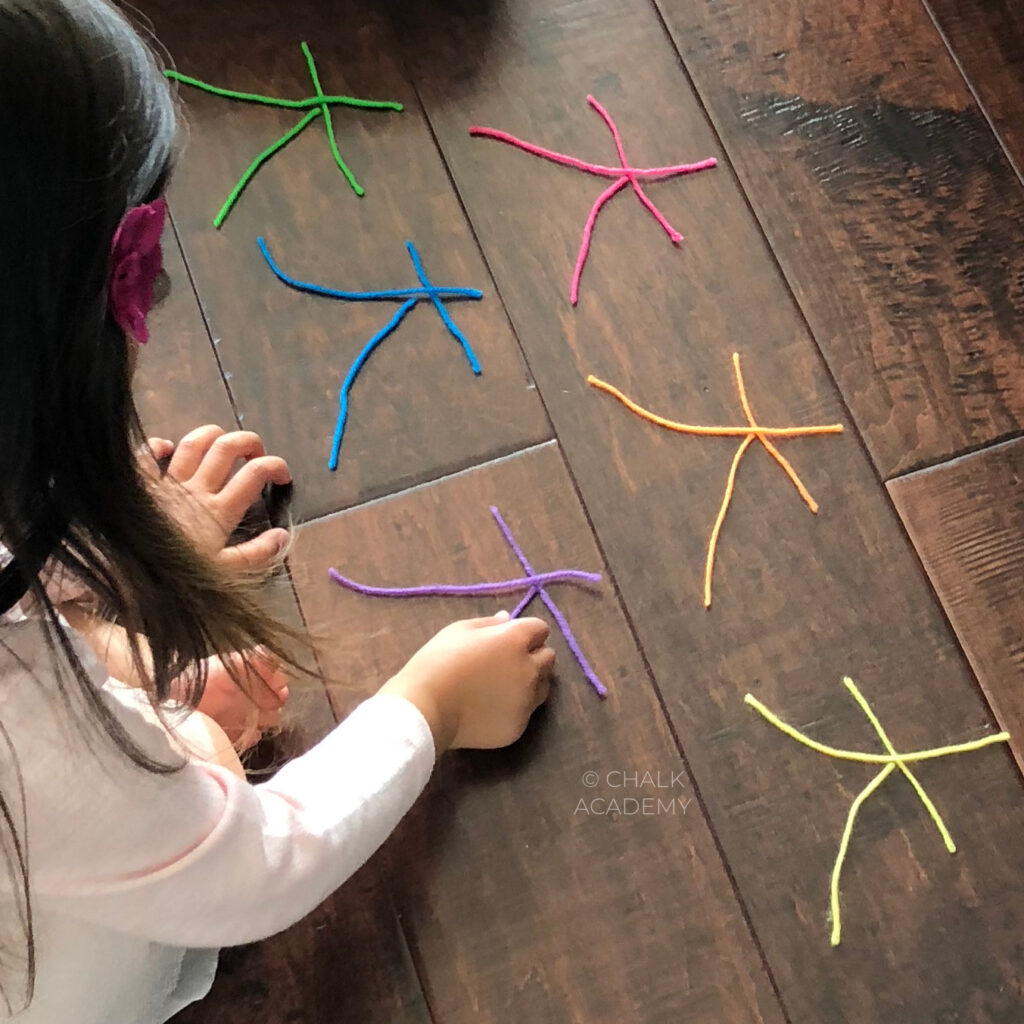
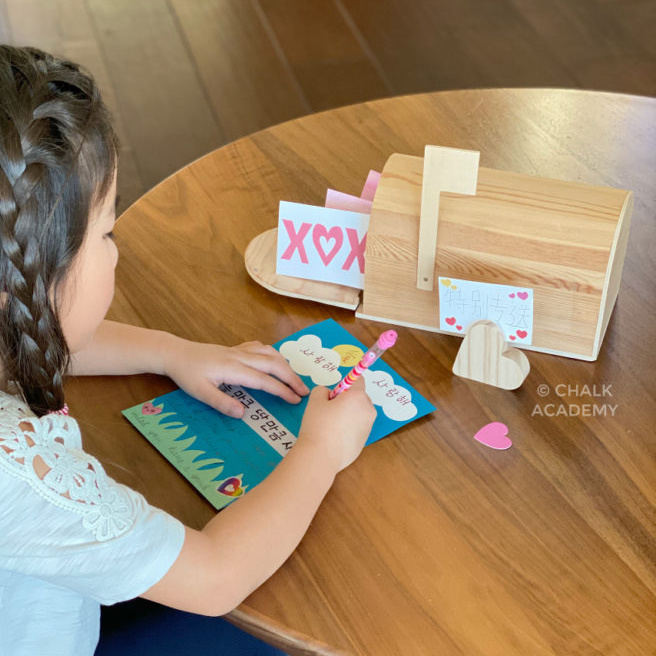

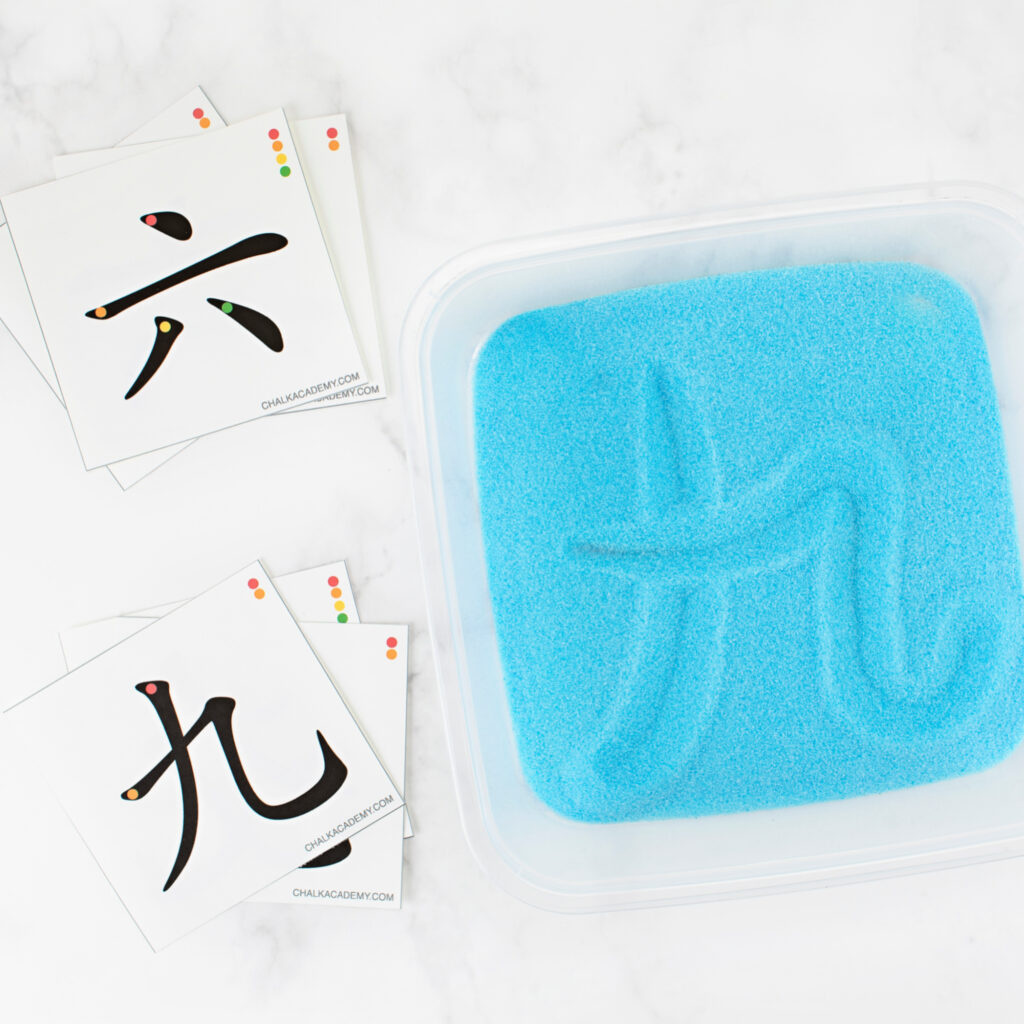
Wondering what curriculum you used for first grade copywork passages pictured. They sound interesting and engaging, and I’m interested for my upcoming first grader. Thanks!
Thanks for the writeup on multilingual copywork. I’m curious how you introduced the idea in the first place and any scaffolding involved? Did you start off by introducing the notebook for instance and explain what it was for or suggesting your daughter write something down? Or pointing out parts of books that would be good to include and making that suggestion? It looks like in one of the pictures she may have started with tracing so I was curious. My daughter recently turned 5 and she’s fluent in English and Japanese, and reads both languages, but only really seems interested in writing in English, probably because Japanese has 2 syllabaries and a third alphabet of thousands of characters of Chinese origin so I’m especially curious about introducing it in a non-threatening way.